
The Alchemy-Spetec app now includes a Leak Seal Material Selection Guide, along with the Polyurethane Estimating Calculator. The Leak Seal Product Selection guide asks you a series of Yes/No questions about your job and then provides product recommendations. The Polyurethane Estimating Calculator takes the guesswork out of estimating material for Leak Seal, Geotech, and Floor Repair jobs. Here's a step-by-step guide...
Download the Alchemy-Spetec App & Create an Account
1. Download the app.
Search Alchemy-Spetec in your Apple App Store or Google Play Store to install the app.
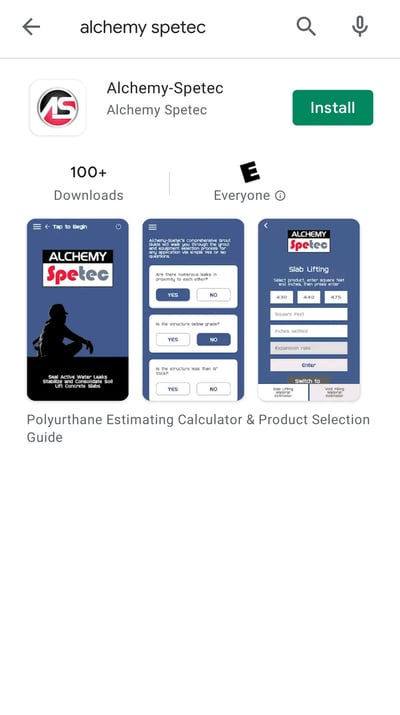
2. Create an account.
After installing the app, create an account by clicking "Sign Up" at the bottom and following the prompts.
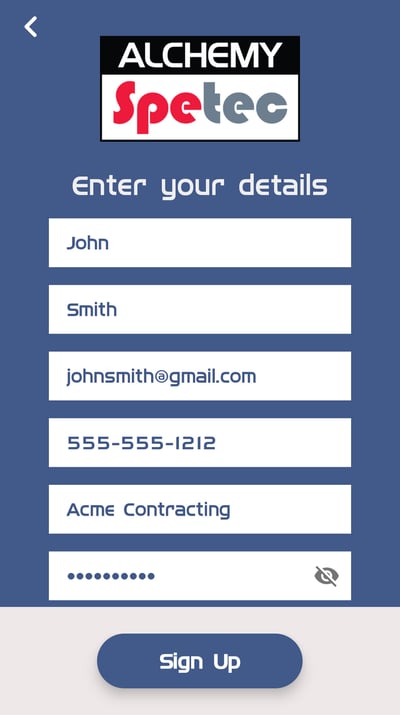
Select a Leak Seal Product for Your Job
1. Tap the three lines in the top left corner to display the application options. Choose Leak Seal Material Selection Guide.
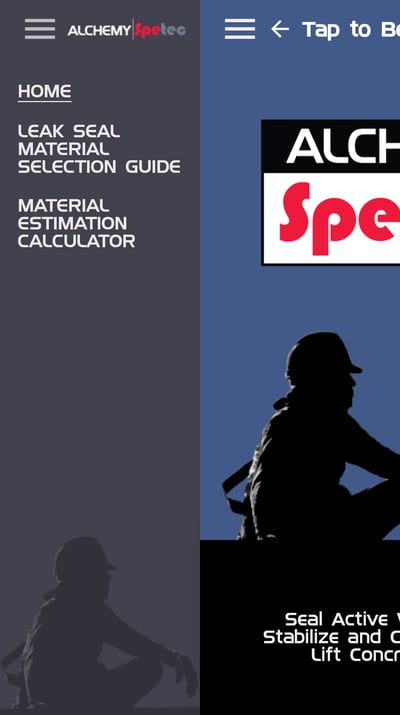
2. Answer a series of Yes/No questions about your leak seal job.
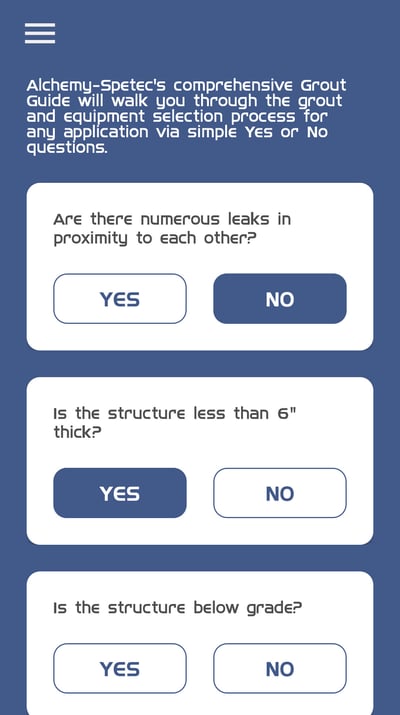
3. Review the product recommendation screen (and/or click the Start Over button at the bottom to begin again). Call the Alchemy-Spetec support squad at 404-618-0438 for more guidance specific to your project.
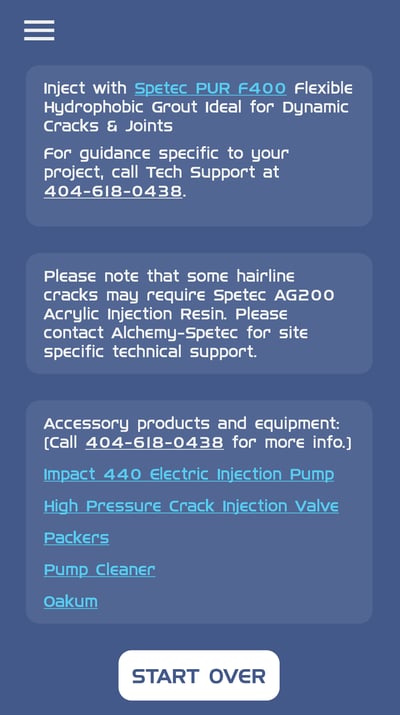
NOTE: You can also access the Leak Seal Material Selection Guide via this red button in the top right corner of our website home page...
Estimate Material for Your Leak Seal, Geotech, or Floor Repair Job
1. Tap the three lines in the top left corner to display the application options. Choose Material Estimation Calculator, then choose Geotech (Slab Lifting & Void Fill), Leak Seal, or Floor Repair for your job type.
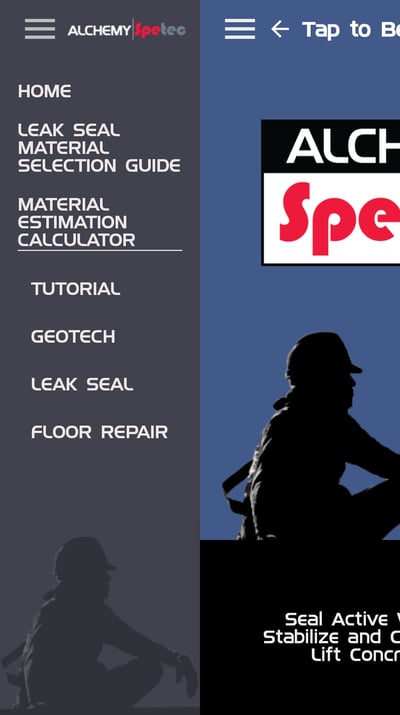
2. Select the measuring system you want to use.
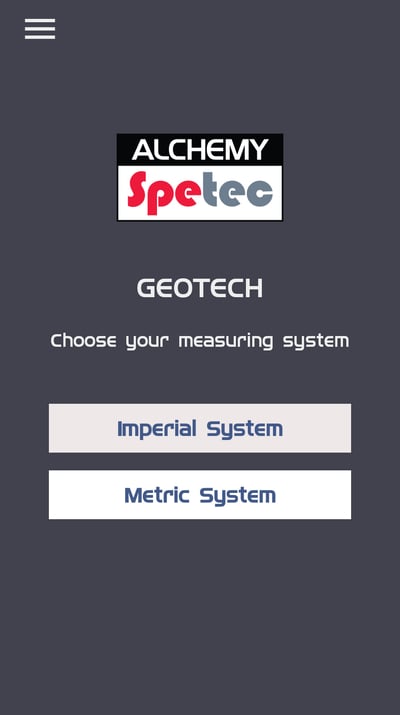
3. The Slab Lifting calculator appears by default. You can switch to the Void Filling calculator by clicking the button at the bottom right. Choose your product and fill in the square feet of your slab, plus the inches it has settled (or inches of void if using the Void Filling calculator).
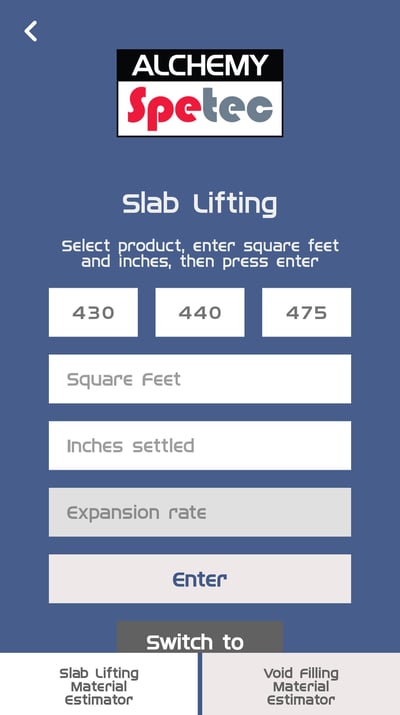
4. View the recommended material quantities. Call the Alchemy-Spetec support squad at 404-618-0438 for more guidance specific to your project.
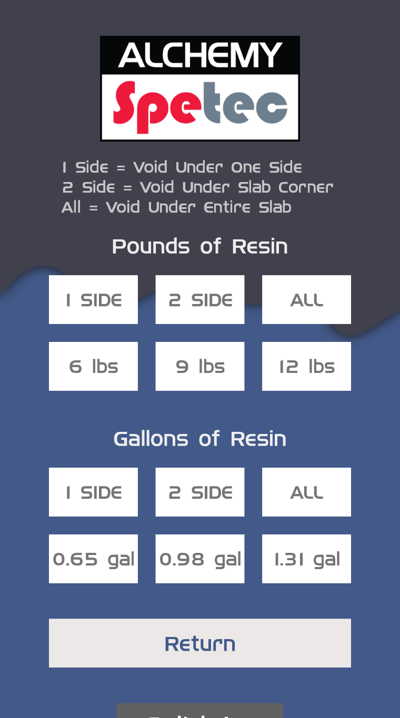




 For most of my 36 years in the chemical grout industry, I have listened to people refer to chemical grouts as temporary leak repair in the same manner they mention a band-aid in stopping bleeding. Many of these same persons also say that stopping water leaks with chemical grouts is like “smoke and mirrors”, implying some sort of black magic. I must state that they are wrong on both counts.
For most of my 36 years in the chemical grout industry, I have listened to people refer to chemical grouts as temporary leak repair in the same manner they mention a band-aid in stopping bleeding. Many of these same persons also say that stopping water leaks with chemical grouts is like “smoke and mirrors”, implying some sort of black magic. I must state that they are wrong on both counts. 
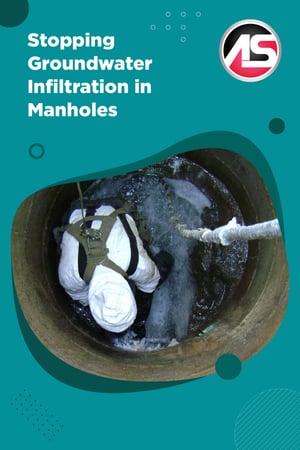 Infiltration is Draining Your Budget
Infiltration is Draining Your Budget

 In the United States,
In the United States, 
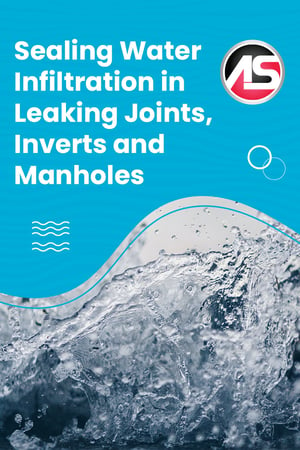 Treatment plants undergo massive strain and efficiency issues when groundwater infiltrates city collection systems. These common problems lead to large expenses that can accumulate if left unchecked. Identifying the root causes and creating a plan to minimize the damages will be dependent on the scale of the problems, the age and condition of your overall infrastructure, and your budget. Having a trusted, experienced team of consultants will prove to be invaluable as you navigate these uncharted waters.
Treatment plants undergo massive strain and efficiency issues when groundwater infiltrates city collection systems. These common problems lead to large expenses that can accumulate if left unchecked. Identifying the root causes and creating a plan to minimize the damages will be dependent on the scale of the problems, the age and condition of your overall infrastructure, and your budget. Having a trusted, experienced team of consultants will prove to be invaluable as you navigate these uncharted waters.
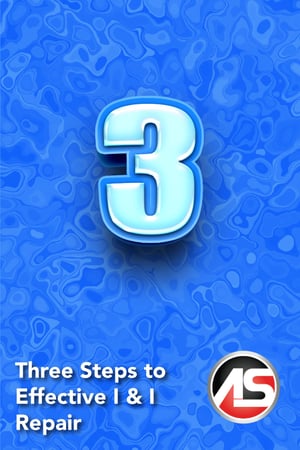 I&I is a major issue that plagues all collection systems. What can be done about it? There are a number of large-scale and costly ways to address it but often these are overwhelming projects to start. So, let’s take a step back and start small with the manholes. A quick review of rain event data will help pinpoint problem areas. There may be numerous issues in a line, but remember we are going for easy manhole infiltration. Start popping manhole covers. We don’t need to look for every minor leak and the large leaks are easy to identify. Obliviously, flowing water is easy to spot but even if a large leak is not active there are normally clear signs of its existence. These signs include staining, native soils being washed in, or joints with bulging ramnecks.
I&I is a major issue that plagues all collection systems. What can be done about it? There are a number of large-scale and costly ways to address it but often these are overwhelming projects to start. So, let’s take a step back and start small with the manholes. A quick review of rain event data will help pinpoint problem areas. There may be numerous issues in a line, but remember we are going for easy manhole infiltration. Start popping manhole covers. We don’t need to look for every minor leak and the large leaks are easy to identify. Obliviously, flowing water is easy to spot but even if a large leak is not active there are normally clear signs of its existence. These signs include staining, native soils being washed in, or joints with bulging ramnecks.


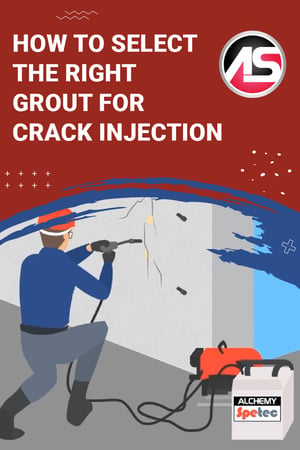 Concrete is the most common building material in the world. While it has high compressive strength, it does not have much tensile strength. It is only since about 1910 that rebar has been specified. Reinforced concrete can and does still crack. So does that matter? Yes, most of the time it does matter.
Concrete is the most common building material in the world. While it has high compressive strength, it does not have much tensile strength. It is only since about 1910 that rebar has been specified. Reinforced concrete can and does still crack. So does that matter? Yes, most of the time it does matter.
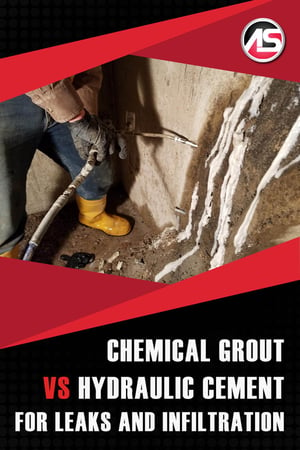 In this post, I’m going to personally review two popular methods used to handle water leaks and infiltration. Both hydraulic cement and chemical polyurethane grouts are used in civil applications such as sewer pipe rehabilitation, tunnel or shaft construction, sealing leaking cracks in concrete structures, permeating soil to control the flow of groundwater, filling voids to stabilize soil, and handling common inflow and infiltration issues found all over the world.
In this post, I’m going to personally review two popular methods used to handle water leaks and infiltration. Both hydraulic cement and chemical polyurethane grouts are used in civil applications such as sewer pipe rehabilitation, tunnel or shaft construction, sealing leaking cracks in concrete structures, permeating soil to control the flow of groundwater, filling voids to stabilize soil, and handling common inflow and infiltration issues found all over the world. 

